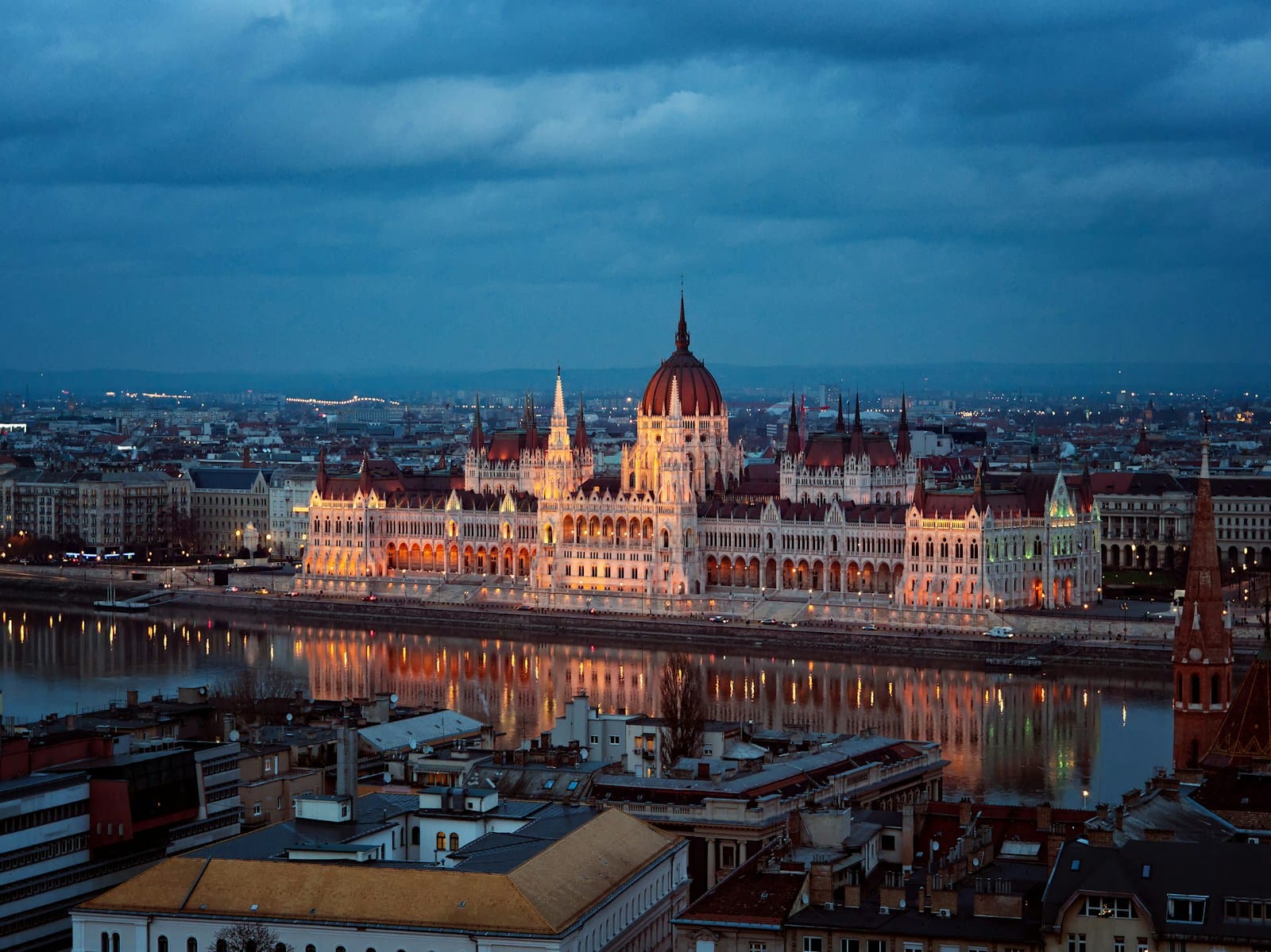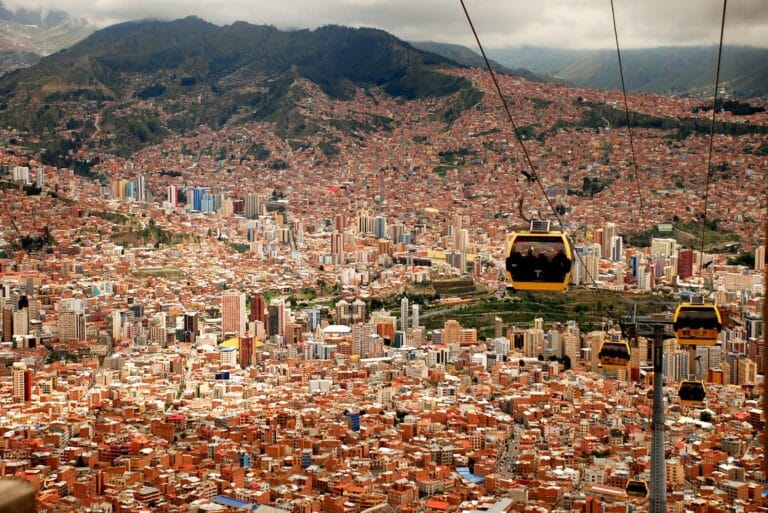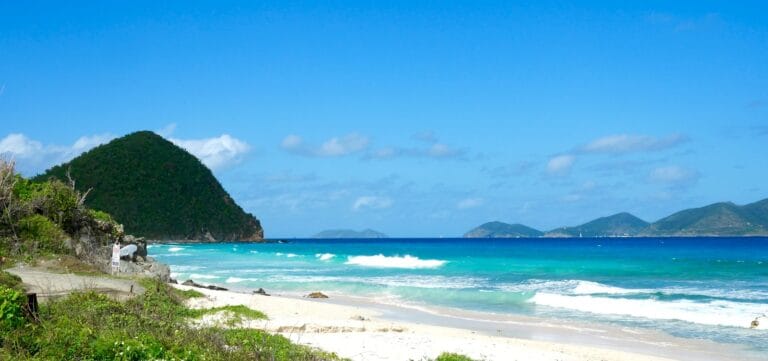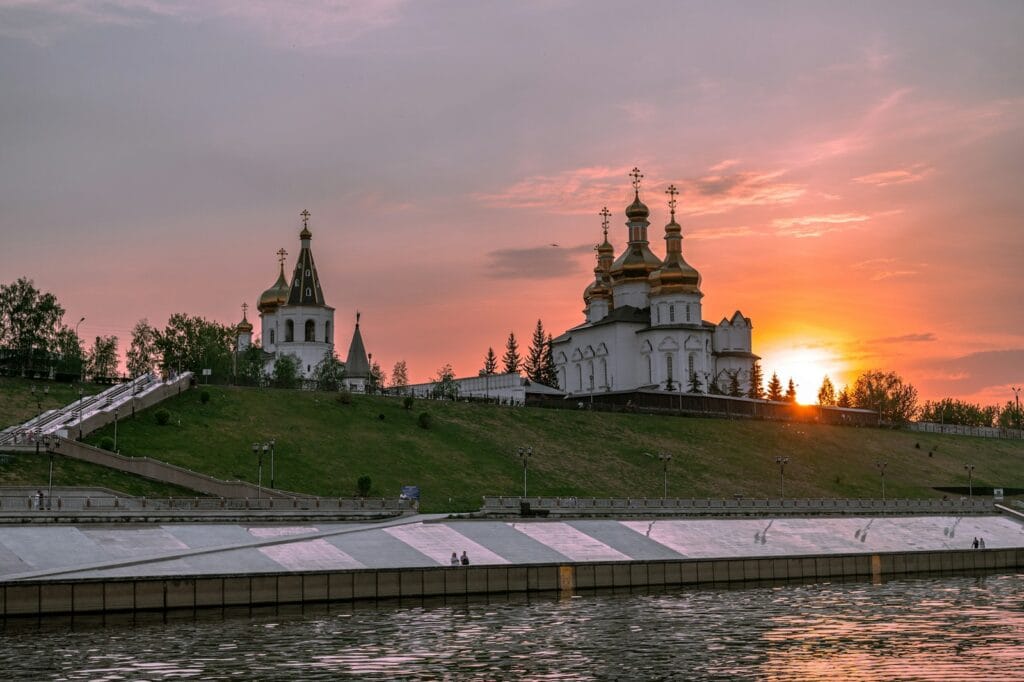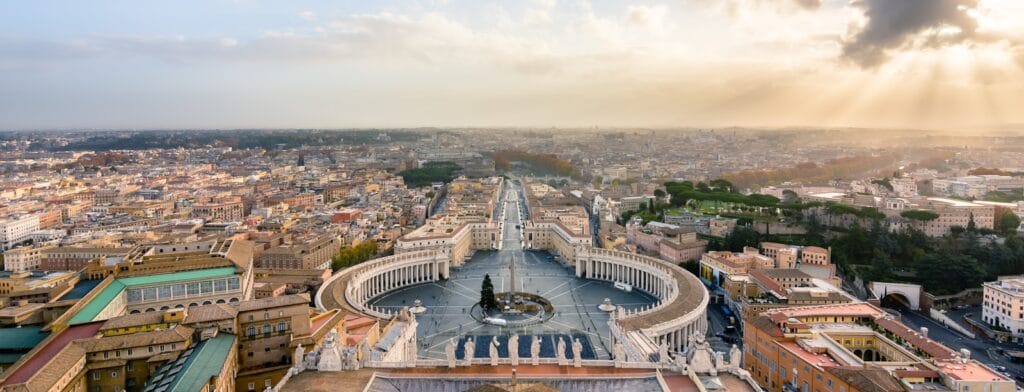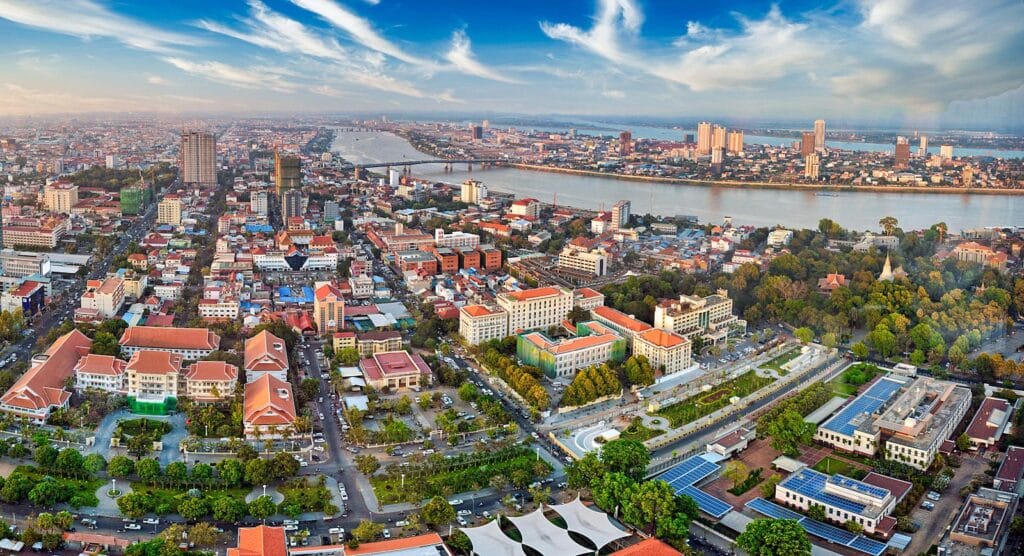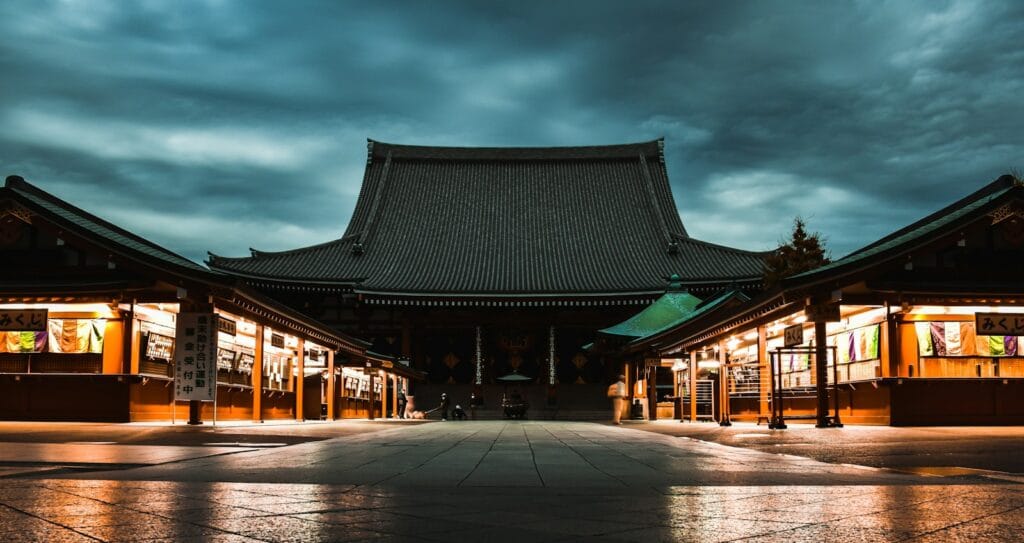Unveil the Soul of the Danube – Your Essential Budapest Travel Guide
Introduction to Budapest Travel Guide
Budapest stirs the senses with its grand boulevards, steamy thermal baths, haunting history, and café culture as rich as its pastries. Divided by the mighty Danube and united by centuries of spirit and struggle, Hungary’s capital is a city of unexpected contrasts — and timeless charm.
Start your journey with our Budapest Travel Guide and uncover thermal springs, castle-strewn hills, ruin bars, and unforgettable things to do in one of Europe’s most exciting destinations.
Looking for local insight? Book immersive Budapest tours and explore the top things to do in Budapest — from evening river cruises to market tastings and historic walking tours.
Continent: Europe
Country: Hungary
Region: Central Hungary
City: Budapest (capital and largest city)
Area: ~525 km²
Population: ~1.7 million (2024 est.)
Density: ~3,200 people/km²
Language(s): Hungarian (official); English widely spoken in tourist zones
Currency: Hungarian Forint (HUF)
Time Zone: CET (UTC+1); CEST in summer (UTC+2)
Nearest Airport: BUD (Budapest Ferenc Liszt International Airport)
Climate: Continental – cold winters, hot summers, four distinct seasons
Known For: Thermal baths, Danube River, Parliament building, ruin bars, Buda Castle, architecture, cafés
Budapest follows Hungary and Schengen Area visa policy
Visa-free for 90 days for U.S., UK, Canada, Australia, Japan, and most EU/EEA countries
ETIAS required for visa-exempt travelers starting in 2025
Passport must be valid for at least 3 months beyond departure
Visa info: Hungarian Immigration
No special vaccines required
Recommended: Routine vaccinations, COVID-19, Tetanus
Public and private hospitals available; English-speaking clinics in tourist areas
EU visitors can use EHIC; non-EU travelers should carry travel insurance
Popular medical tourism destination (dental and cosmetic care) — get coverage here
Stay Informed with Official Updates: World Health Organization – International Travel and Health | Centers for Disease Control and Prevention – Global Travel Health
Refer to U.S. State Dept – Hungary Travel Advisory
Rated Level 1 – Exercise Normal Precautions
Very safe overall; watch for pickpocketing on transit and in crowded tourist areas
Beware of overpriced taxis or “tourist trap” restaurants — ask for menus with prices
Stay Informed with Official Updates: US Travel Advisory | UK Foreign Travel Advice
National Day (1848 Revolution) – March 15
State Foundation Day – August 20
1956 Revolution Memorial Day – October 23
Christmas – December 25–26
Easter Monday, Pentecost, and All Saints’ Day are also observed
Museums and public transport may operate on reduced schedules during holidays
Currency: Hungarian Forint (HUF)
Credit/debit cards widely accepted in hotels, restaurants, and shops
Cash preferred at markets, smaller cafés, and ruin bars
Tipping: 10–15% standard in restaurants (sometimes included in bill)
ATMs available citywide; avoid dynamic currency conversion
Duty-Free info (for non-EU travelers):
Alcohol: 1 liter spirits, 2 liters wine
Tobacco: 200 cigarettes
Goods: €430 limit
VAT refund available on qualifying purchases — ask for Tax-Free Shopping forms
Budapest Ferenc Liszt International Airport (BUD) – ~16 km southeast of city center
Access via 100E airport shuttle, taxi, or ride apps (Bolt, Főtaxi)
Direct flights to EU, UK, Middle East, and North America
Public transport includes metro (M1–M4 lines), trams, buses, and suburban trains (HÉV)
Buy Budapest Card or travel passes at machines and kiosks
Tram 2 offers a scenic route along the Danube
Bolt and local taxis available — avoid unregistered taxis
Walking and cycling are excellent in the central districts (District V–VII)
Free public Wi-Fi in many tourist areas, cafes, and metro stations
4G/5G mobile coverage across the city
eSIM and SIM cards from Telekom, Yettel, and Vodafone available at airport and malls
Internet speed is fast and coworking spaces are plentiful in District VII (Erzsébetváros)
Legal drinking age: 18
Public drinking tolerated in many areas (except around Parliament and transit zones)
Marijuana and drugs are strictly illegal
LGBTQ+ travelers welcomed in tourist zones; Pride events held annually
Modest dress is expected in churches and memorials
Tipping in cash is appreciated even when paying by card
Emergency Numbers:
Police: 112 (EU-wide)
Tourist police operate in central districts and near landmarks
Hospitals with English-speaking staff: Semmelweis University Clinics, Róbert Károly Private Hospital
Travel insurance recommended for theft, healthcare, and flight changes
Embassy listings available via Hungary Consular Services
Continental climate
Winter (Dec–Feb): Cold and often snowy (–2 to 5°C / 28–41°F)
Spring (Mar–May): Mild and ideal for walking tours
Summer (Jun–Aug): Hot and sunny (25–35°C / 77–95°F) — festivals in full swing
Fall (Sep–Nov): Crisp and colorful with fewer tourists
Best time to visit: May–June and September–October
Forecast: Weather Forecast
Get to Know the City – Neighborhoods & Districts
- Castle District (Buda)
Set atop a hill on the Danube’s west bank, this historic quarter offers cobbled lanes, panoramic viewpoints, and elegant landmarks like Buda Castle and Matthias Church. Best explored on foot or via the funicular. - District V (Belváros–Lipótváros)
The heart of Pest and home to Parliament, St. Stephen’s Basilica, and stylish pedestrian zones like Váci Street. Perfect for sightseeing, shopping, and riverside dining. - Jewish Quarter (District VII)
Grit meets creativity here. Once Budapest’s Jewish ghetto, today it thrives with ruin bars, street art, synagogues, and edgy nightlife. - Andrássy Avenue & Heroes’ Square (District VI & XIV)
A tree-lined avenue leading to the city’s grandest square, this area offers high culture (Opera House), high fashion, and the entrance to City Park. - Újbuda (District XI)
A rising local favorite on the Buda side, full of university life, riverside bars, and scenic trails on Gellért Hill. - Margaret Island
This island park in the middle of the Danube is a haven of fountains, ruins, thermal pools, and bike paths. Locals come here to relax year-round.
Top Attractions & Iconic Sights
Skyline Views and Architectural Icons
- Parliament Building
Hungary’s largest and most iconic building — stately, neo-Gothic, and best viewed from across the river or via evening river cruise. - Fisherman’s Bastion
A neo-Romanesque fantasy terrace overlooking Pest. Climb its fairytale towers for unforgettable city views. - Buda Castle
A UNESCO World Heritage Site housing the Hungarian National Gallery and the Budapest History Museum. Best reached by foot or funicular. - St. Stephen’s Basilica
Massive and magnificent, this cathedral houses Hungary’s most sacred relic — the mummified hand of Saint Stephen.
Local Tip:
Climb St. Stephen’s Basilica’s dome for sweeping views and fewer crowds than Fisherman’s Bastion.
Museums and Cultural Gems
- Hungarian National Museum
From ancient Magyar history to the 1956 Revolution, this museum is the best place to understand Hungary’s complex past. - House of Terror Museum
A sobering, powerful museum documenting the fascist and communist regimes that ruled Hungary in the 20th century. - Museum of Fine Arts
Masterpieces from Raphael to Rembrandt, housed in a classical colonnade opposite Heroes’ Square. - Hospital in the Rock
An underground labyrinth used during WWII and the Cold War — equal parts eerie and fascinating.
Family Favorites
- Budapest Zoo & Botanical Garden
One of Europe’s oldest zoos, located in City Park and full of heritage buildings, playgrounds, and exotic animals. - Budapest Eye
A large Ferris wheel offering fun rides and great views of the central districts. - MiniPolisz
A child-sized city where kids roleplay jobs and navigate their own civic adventure.
Natural Escapes Within and Around Budapest
- Gellért Hill
Climb for some of the best views of the city and the imposing Liberty Statue. Bring water — it’s a workout. - City Park (Városliget)
Home to Vajdahunyad Castle, the Széchenyi Baths, the zoo, and skating in winter. A full-day playground. - Margaret Island
A local favorite for jogging, picnics, thermal pools, and the musical fountain show in summer. - Normafa & János Hill
Take the cogwheel train or hike up for forest walks, city views, and an escape into nature just 30 minutes from the center.
Day Trip Ideas
- Szentendre – 40 min by train
An artsy town along the Danube with galleries, cafés, and colorful Baroque houses. - Visegrád – 1 hr by train or car
Visit medieval ruins, a hilltop fortress, and enjoy panoramic views of the Danube Bend. - Etyek Wine Region – 30 min by car
Dubbed the “Hungarian Napa,” Etyek is perfect for wine tastings and countryside ambiance. - Lake Balaton – 1.5–2 hrs by train
Central Europe’s largest lake, with beach resorts, vineyards, and laid-back summer fun.
Culture, History & Local Identity
Budapest is the soul of Hungary — a capital shaped by conquest, creativity, and resilience. From Ottoman baths to Habsburg grandeur and post-Soviet revival, its layers tell stories of survival and renaissance.
- Great Synagogue
The largest in Europe, this Moorish-style synagogue anchors the Jewish Quarter. Don’t miss the Holocaust Memorial Tree and Jewish Museum. - Shoes on the Danube Bank
A moving tribute to Holocaust victims — 60 pairs of cast-iron shoes mark the place where people were executed into the river. - Hungarian State Opera House
Recently restored and more dazzling than ever, the Opera House is a must-see for architecture lovers and music fans alike. - Cultural Tip:
Catch a traditional folk dance show at Duna Palota or explore Budapest’s literary cafés like New York Café or Centrál Kávéház.
Local Food, Markets & Artisan Finds
Must-Try Dishes
Hungarian cuisine is bold, hearty, and full of paprika. Must-try dishes include gulyás (goulash), lángos (fried flatbread with sour cream and cheese), pörkölt (meat stew), and sweet rétes (strudel). Wash it down with Tokaji wine or a shot of pálinka (fruit brandy).
Best Food Spots
- Café Gerbeaud – Historic and elegant, perfect for cake and coffee.
- Gettó Gulyás – Homey, affordable, and great for classic Hungarian stews.
- Mazeltov – A modern ruin bar turned Mediterranean restaurant with string lights and mezze plates.
- Rosenstein Vendéglő – Jewish-Hungarian fusion just outside the center.
Local Markets
- Great Market Hall – Multi-level food hall with meats, spices, and ready-to-eat lángos.
- Hunyadi Square Market – Less touristy and more local flavor.
- Gozsdu Udvar – A complex of restaurants, craft shops, and nightlife in the Jewish Quarter.
Taste your way through Budapest and discover some of the most delicious things to do in the city.
Events, Nightlife & Seasonal Fun
Annual Events
- Budapest Spring Festival (Apr) – Classical music, dance, and art.
- Sziget Festival (Aug) – One of Europe’s biggest music festivals, on an island in the Danube.
- Christmas Markets (Nov–Dec) – Lights, mulled wine, and artisan crafts in Vörösmarty Square and beyond.
- National Day (Aug 20) – Fireworks over the Danube and cultural celebrations across the city.
Nightlife by District
- Jewish Quarter (VII) – Legendary ruin pubs like Szimpla Kert and craft cocktail bars.
- District V – Classier spots for rooftop drinks and live music.
- Buda Side – Wine bars and hilltop terraces with scenic views.
Seasonal Highlights
- Spring – Perfect for park picnics and flower markets.
- Summer – Festivals, river cruises, and late-night patios.
- Autumn – Wine harvests and golden-lit boulevards.
- Winter – Thermal bath steam rises against icy air — pure magic.
Which Airport Should You Use?
- Flying internationally? Use Budapest Ferenc Liszt International Airport (BUD) — 25 minutes by taxi or 35–45 min by airport shuttle bus to downtown.
- On a European budget airline? BUD is still the best-serviced option.
- Coming from Austria or Slovakia? Consider scenic trains from Vienna or Bratislava (2.5 hrs).
Getting Around the City – Transport Tips
Budapest is large but well-connected by metro, trams, buses, and ferries.
- Metro – Four color-coded lines; M1 is Europe’s oldest underground.
- Trams – Especially Tram 2 (scenic) and Tram 4/6 (frequent, central).
- Buses & Trolleybuses – Reach outer neighborhoods and hills.
- Boats – Public ferry boats are cheap and scenic on the Danube.
- Apps – Use BudapestGO (BKK) or Citymapper.
- Local Behavior Tip – Always validate paper tickets before boarding.
Best Time to Visit
| Season | Weather | Crowds | Highlights |
|---|---|---|---|
| Spring | 50–70°F | Medium | Flowers, fewer tourists, river walks |
| Summer | 70–90°F | High | Festivals, nightlife, cruises |
| Autumn | 50–65°F | Low–Medium | Wine season, fall colors |
| Winter | 25–40°F | Low | Christmas markets, thermal bath magic |
Key Travel Essentials
| Essentials | Details |
|---|---|
| SIM/Data | Vodafone, Yettel, Telekom — or eSIM available |
| Transit Costs | 24-hr pass ~€5.50; single ride ~€1.30 |
| Entry Points | Budapest Airport, Keleti Station |
| Local Vibe | Bold, emotional, romantic, gritty |
| Walkability | Moderate — flat Pest, hilly Buda |
Quick Picks
Best for food: Jewish Quarter
Best for views: Fisherman’s Bastion
Best nightlife: Ruin bars (District VII)
Best romantic spot: Danube cruise at sunset
Best slow travel: Margaret Island
Must-See Experiences in Budapest
- Watch the sun rise from Fisherman’s Bastion before the crowds arrive.
- Drift down the Danube on a nighttime river cruise with Parliament lit in gold.
- Soak in 100°F thermal waters at the Széchenyi Baths — even in the snow.
- Explore the haunting past at the House of Terror Museum.
- Sip wine in a ruin bar built into a once-abandoned building.
- Visit the Great Market Hall, taste local sausages, and take home paprika.
Book immersive Budapest tours and experience unforgettable things to do in Budapest — from steamy bath rituals and sunset cruises to hidden ruin pubs and royal palaces.

